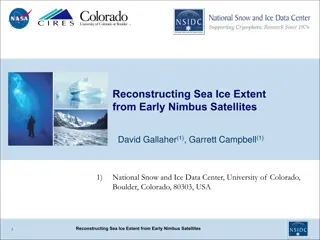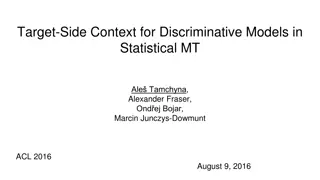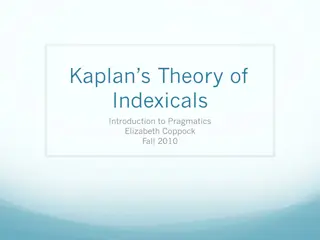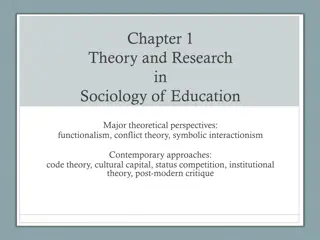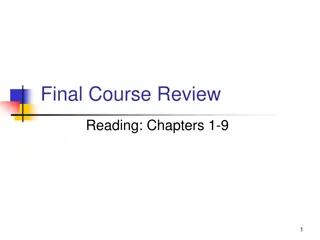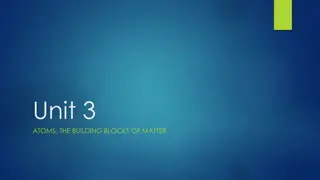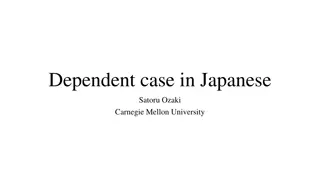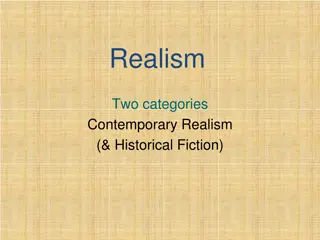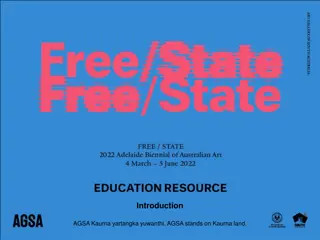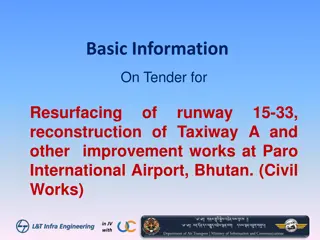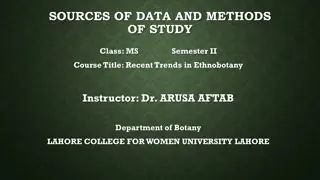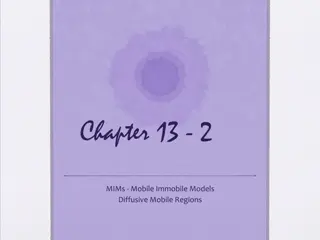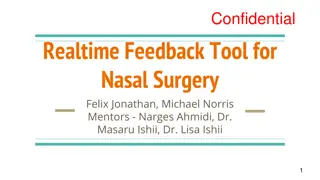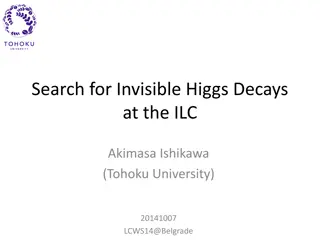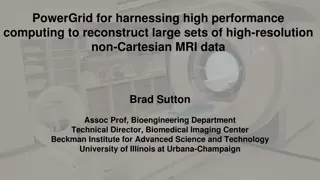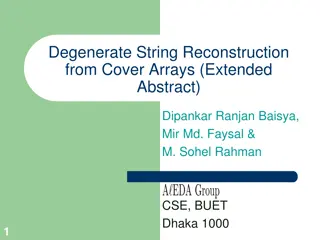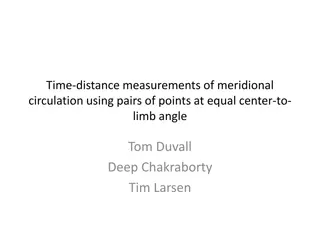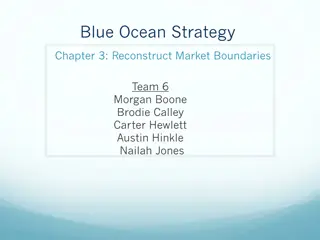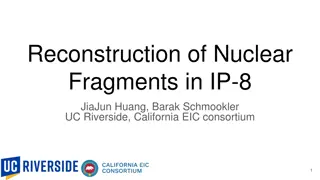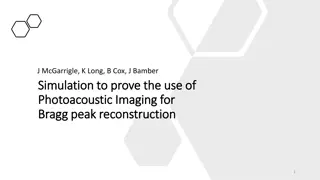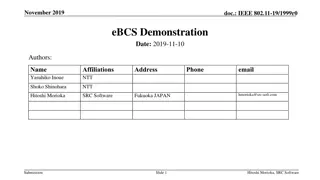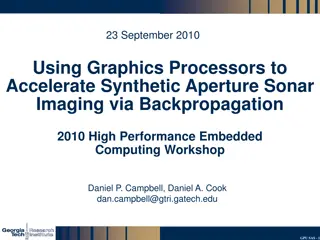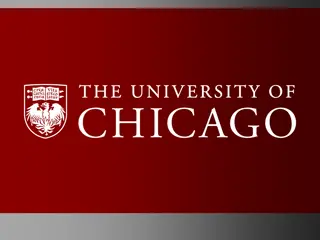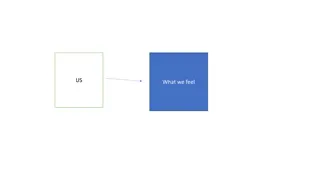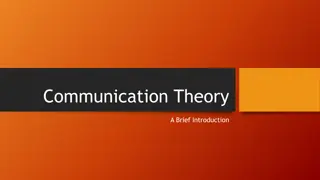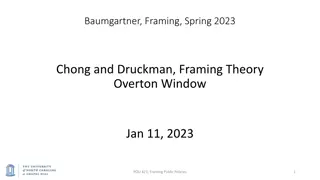Reconstructing Vygotsky's Theory in Contemporary Context
The reconstruction of Vygotsky's fundamental ideas in the modern social and scientific landscape is crucial due to misconceptions and challenges faced in international academic communities. This process involves understanding the cultural-historical theory, exploring broader epistemological and methodological difficulties, and developing a deeper comprehension of Vygotsky's theory amidst socioeconomic crises. The intertwining of understanding and explaining, along with generating and anticipating solutions, propels the evolution of Vygotsky's theory in today's globalized world.
Download Presentation

Please find below an Image/Link to download the presentation.
The content on the website is provided AS IS for your information and personal use only. It may not be sold, licensed, or shared on other websites without obtaining consent from the author. Download presentation by click this link. If you encounter any issues during the download, it is possible that the publisher has removed the file from their server.
E N D
Presentation Transcript
About reconstruction of the fundamental ideas of Vygotsky's theory in the contemporary social and scientific context Manolis Dafermos University of Crete ISCAR Summer University, Moscow 3-8 July 2017
Introduction "Vygotsky boom" (Cole, 2004) linked with the continuous reinterpretation and wide dissemination of his ideas across different counties as well as across various disciplines arise serious epistemological, methodological and practical questions. Misconceptions of Vygotsky's theory in international academic communities (Gillen, 2000; Ageyev, 2003; Veresov, 2009). Inaccuracies, mistakes and outright falsifications in translations of Vygotsky's works in English
Wider epistemological and methodological difficulties What means understanding cultural-historical theory? What was the social and scientific context of the emergence of cultural-historical theory? Why cultural-historical theory "relives" in contemporary globalized world? How Vygotsky's theory "travels" across different countries and continents? How is possible to understand deeper and develop further Vygotsky's theory in times of socioeconomic crisis?
Understanding should be internally connecting with explaining. The traditional mechanistic explanation of a isolate, linear chain between causes and effects is not able to deal with complex, organic systems. Developing a non linear understanding of historicity of the explanation (included the explanation of a theory) as a dynamic, developmental process. The traditional concept of temporality as a transition from the past to the present and from the present to the future is not sufficient to grasp the complex process of the formation and transformation of a theory in the history of science and society. Understanding is formed as a part of the complex process of rethinking of the previous theories from the perspective of new challenges and problems. Both the subject and research object are mediated by a historically defined complex set of traditions, attitudes and interactions.
The main idea Generating and anticipating possible solutions is an essential dimension of dealing with challenges and solving problems. Going beyond the present situation through anticipation what doesn't exist but it may appear opens new perspectives in rethinking previews accumulated knowledge and reframing open ended problems.
Recontextualizating Vygotsky's theory The difference between the context of its emergence in the first decades of 20th century in the USSR and the multiple contexts of its reception and implementations in various parts of the globe (Daniels, Cole, & Wertsch, 2007). Questions must inevitably arise: how is it possible to recontextualize and develop further cultural-historical in the contemporary globalized and diverse world? Is it possible to go with and beyond cultural-historical theory in a dialectical way? What happens when a theory travels from one context to another?
Saids (1983) concept of traveling theory the changes that a theory undergoes as a result of its movement from one environment to another. the origin of a theory the conditions of its acceptance, revision and transformation in a new social environment. The tendency of the acceptance of these sides, dimensions or ideas of the initial theory that make sense in a new intellectual and cultural milieu. A fragmentary reception of the theory is an inevitable consequence of its "travelling" across countries and continents.
It is really difficult a simple repetition of the same theory when it "travels" in a different context. Understanding an idea is not its simple repetition. The identification of understanding with the external reproduction of quotes and phrases is a kind of an external, false objectivity linked with the external repetition of words without understanding.
USA 1950-1960: Under the influence of the crisis of behaviorism and outbreak of first cognitive revolution". Vygotsky's ideas on sign mediation as an original perspective to overcome the linear, behavioristic explanation 1970: The growing disappointment from the "first cognitive revolution" and the expansion of the "second cognitive revolution. The crisis of American experimental psychology created conditions of the reception of Vygotsky's theory through the prism of "sociocultural paradigm".
A clash between the cultural-historical theory that was formed in Russia/Soviet Union and "sociocultural paradigm" that was developed in North America. The concept of development is a core concept of cultural-historical theory. The adherents of the sociocultural approach call into question developmentalism, the explanation of psychological phenomena in terms of a linear progression. Challenging any kind of universalism advocating cultural diversity. the differences in the social and intellectual context of their formation.
Brazil Cultural historical theory was perceived through the prism of critical pedagogy and "...the experiences of alternative schooling" (Lima, 1995a, p.443). The movement of critical pedagogy was formed under the influence of Paulo Freire's ideas on adult education. The adherents of critical pedagogy examine educational process from the perspective of social liberation and democratization. Vygotsky's ideas on consciousness and ZPD have been included in the framework of critical collaborative research with its focus on dialogue and social/educational transformation.
Scientific traditions, research practices and academic politics are involved in the process of the reception and implementation of Vygotsky's theory in the local and global contexts. Being aware about implicit and explicit assumptions of each concrete "reading" of Vygotsky's theory as a preconditions of its recontextualization and further creative development.
The challenge of the implementation of Vygotsky's theory in multidisciplinary, interdisciplinary domain Vygotsky's ideas have been applied in the field of education (Hedegaard and Chaiklin, 2005; Van Oers, Waedekker, Elbers and Van der Veerand 2008), language theory (Robbins 2001; Byrnes 2006; Jones 2008), literacy research (Smagorinsky 2011), cognitive science (Falikman 2014), semiotics (Ivanov 2014), workplace (Engestr m 2007; Holzman 2009), neuropsychology (Toomela 2014; Kotik-Friedgut and Adrila, 2014), theory of Art (Bulgakowa 2014), sociology (Daniels 2012). The diversity of the disciplinary background of the members of the contemporary Vygotskian academia. The members of contemporary Vygotskian academia have as their disciplinary focus not only psychology but also educational sciences, linguistics, sociology, history, social anthropology, cognitive sciences, cultural studies, organizational sciences, social work, and etc.
The Indian fable about Elephant and the Blind Men. Each blind man creates his own version of reality from the perspective of their limited experience. All these men are right in their own terms, everyone depict a real side of the elephant. At the same time, everyone is wrong, because the elephant is not reduced to particular parts of its body that they explored. The question arises whether it is possible to depict the elephant in a holistic way. Is it possible to develop an interdisciplinary, holistic account of Vygotsky's research program in the process of its development?
the word acquires its sense in the phrase. The phrase itself, however, acquires its sense only in the context of the paragraph, the paragraph in the context of the book, and the book in the context of the author's collected works (Vygotsky 1987, p. 276). get into the writer's creative laboratory and explore its dynamics and development regarding his contribution in the wider context of the history of science.
"It can be said of any important discovery in any area, when it transcends the boundaries of that particular realm, that it has the tendency to turn into an explanatory principle for all psychological phenomena and lead psychology beyond its proper boundaries into broader realms of knowledge. In the last several decades this tendency has manifested itself with such amazing strictness and consistency, with such regular uniformity in the most diverse areas, that it becomes absolutely possible to predict the course of development of this or that concept, discovery, or idea" (Vygotsky 1997, p.241). The expansion and implementation of a theory out of the domain of its initial emergence into a more general multidisciplinary, interdisciplinary domain offers the opportunity to reveal both its possibilities and limitations. how is it possible to develop further cultural-historical across a wide range of disciplines and fields? how is possible to carry out an interdisciplinary cultural-historical research
Bridging the gap between theory and practice The central ideas of cultural-historical theory were formulated by Vygotsky on the basis of a critical reflection on problems that was arisen in his own professional and social practice (his engagement in defectological practice, his practical work with the education and training of handicapped children). His project of building of a new theory of human development as a part of the process of changing the world. It is this commitment to the broader transformative liberational social project that puts the cultural-historical approach into stark opposition to much of alternative developments in the 20th century... (Stetsenko 2003, p.97). The gap between theory and practice was one of the most important causes of the crisis in psychology. Vygotsky's concept of philosophy of practice
Contemporary scholars are also concern about "the long-standing, conflicted relationship between science and practice (Henriques & Sternberg, 2004, p. 1060). The dominance of the academic division of labour. Scholars and practitioners tend to live in different world, alienated each from other.
How it is possible to apply Vygotsky's theory in practice in a totally different context? The existence of essential differences between the nature of practice in Vygotsky's creative laboratory and current practice in different parts of the globe in different disciplines. Bringing together practice and theory means that both practice and theory should be changed. An application of Vygotsky's theory in practice is impossible without its essential development.
Imaging the future, remembering the past, changing the present Cultural historical theory is a future-oriented theory. It focuses on the potential for further development rather than the results of the developmental process. he emphasis is given on buds or flowers of development, rather than the fruits of development.
Viktor Frankl "If we take man as he is, we make him worse, but if we take man as he should be, we make him capable of becoming what he can be So if you don t recognize a young man s will to meaning, man s search for meaning, you make him worse: you make him dull, you make him frustrated. While if you presuppose in this man, there must be a spark for meaning. Let s presuppose it and then you will elicit it from him, you will make him capable of becoming what he in principle is capable of becoming" (Frankl, 1972).
contemporary cultural psychology has mainly past or short term present orientation. The dominance of a past-orientation is an expression of the epigonism in science Epigonism is only an expression of the lack independent and creative thinking but, first of all, the objective difficulty to overcome a crisis state of a discipline and shed light on news ways for further development of a theory. The epigones are limited to repeat or imitate other ideas without developing them further. "...the best way to follow a thinker is to develop the ideas further, rather than declare one s membership in a virtual community" (Valsiner, 2009, p.7).
The complexity of human/social ways of dealing with the event temporality. In order to solve complex problems, people have the imaginative capacity to "travel" back in time in order to rethink the previews stages of development from the perspective of the new challenges and problems. They still have the ability to imagine and anticipate the future and take a distance from the current situation especially when it seems deadlocked. Nikolai Bernstein (1896-1966) introduced the concept of the model of the required future (or the model of a requisite future , in Russian potrebnoe budushee )
The role of imagination in experiencing and changing The projection of what could or should be in the future and the implementation of future-oriented actions in times of a socioeconomic crisis. Leaving and coming back to reality expands personal and collective experiencing and offers the opportunity to perceive reality in terms of its change rather passive adaptation to it. The transition toward the future - an agonizing search for unusual paths, alternative ways and unpredictable and original solutions of open-ended questions and complex problems. Imagination and promotion of agency and human freedom.
A discussion between Galperin and Piaget in August 1966, at the XVIII International Congress of Psychologists in Moscow Piaget defined the difference his position from Galperin s theory: I study what exists, and you study what can be. Defending his position of active, planned formation of mental processes" Galperin replied: But what exists, is only a special case of what can be! (Obuhova, 1999, p.363) (Obuhova, 1999)
Kuno Fischer Descartes und seine Schule ...it is possible distinguish in the transformation (of a systems of ideas) their advanced stages, on the most important of which we now give. In the first stage, that constitutes the starting point, the guiding principles are transformed into individual parts. But if, despite these changes on the basis of the system, the problem is not yet solved, then it is necessary to climb to the second stage and deal with the complete transformation of the principles... . If the objective on the new road is not achieved, ...then it is possible to make the task solvable through changing the basic question, through the transformation of whole problem: this transformation is an overturn or era . Vygotsky s comments My research! The task of the future The task of the distant future
Experiencing temporality in nonlinear, dynamic terms as an important dimension of solving crucial theoretical and practical problems through remembering the ways of solving similar encountered difficulties in the past, imagining the future and possible ways of dealing these challenges What is the next step of the development of CHT?
A critical reflection on crucial open-ended social, economic environmental, and educational problems. The impact of the social, economic, political, ecological crisis in different parts of the globe on cultural development? The impact of digital media and more generally artificial intelligence on human development? Tendencies of distorted development? Promoting human development in times of a social crisis? Moving with and beyond Vygotsky in a dialectical way through rethinking and developing cultural-historical theory
THANK YOU FOR YOUR ATTENTION


